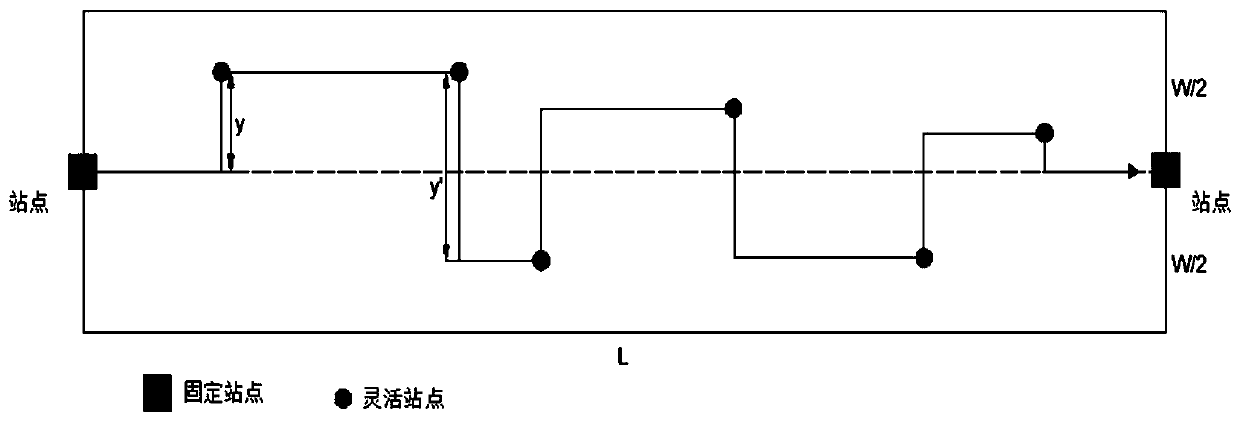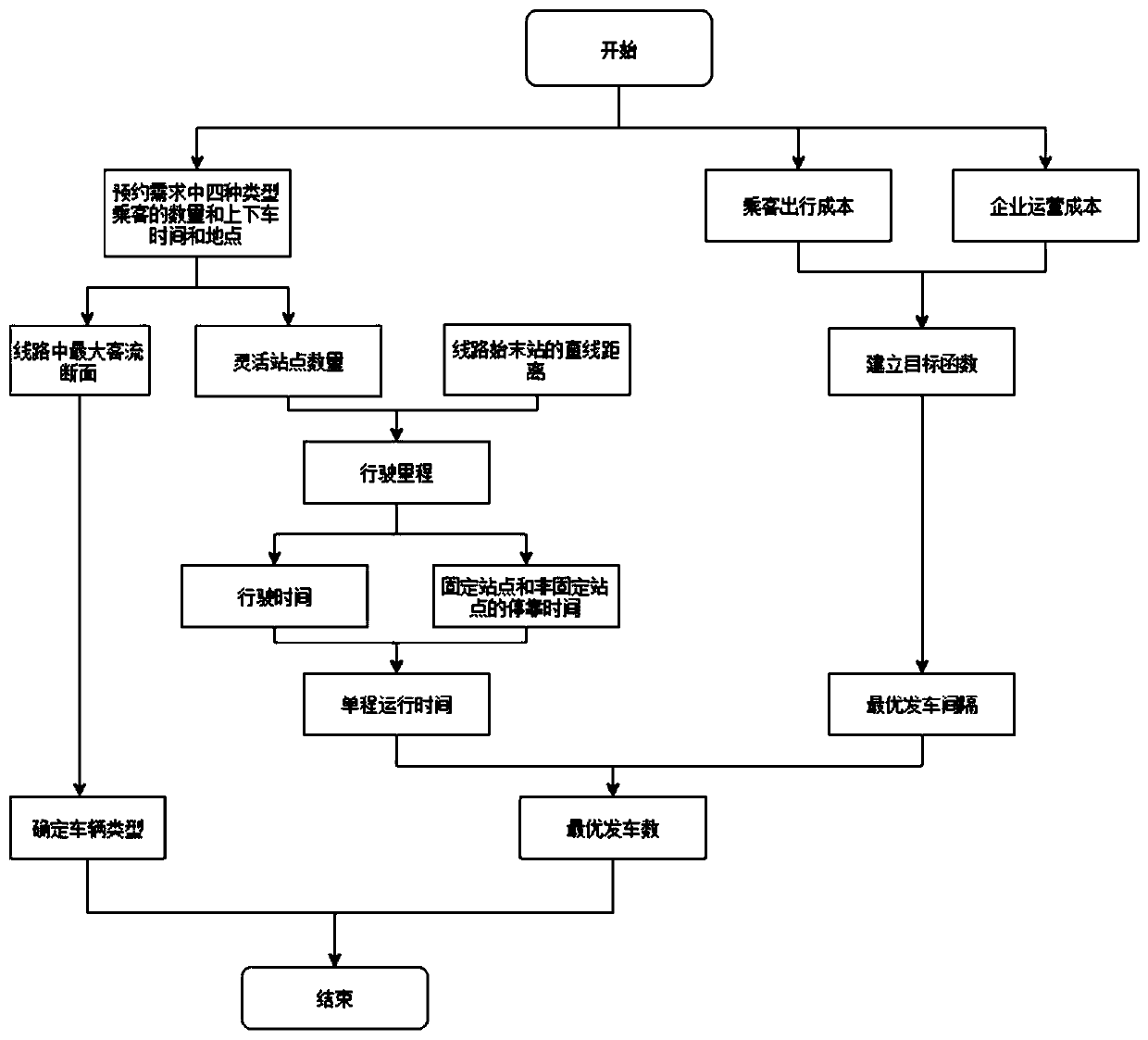Method for determining number and type of vehicles in variable route bus configuration
A technology for the number of vehicles and routes, which is applied in the field of determining the number and types of vehicles configured on variable routes, which can solve problems such as stopovers and limited single vehicles, and achieve the effect of reducing operating costs and reducing empty mileage
- Summary
- Abstract
- Description
- Claims
- Application Information
AI Technical Summary
Problems solved by technology
Method used
Image
Examples
Embodiment 1
[0040] Embodiment 1: Since the variable-route bus has not yet operated in China, the domestic research on this aspect is limited to theoretical research. For the operation of variable-line buses, some operating environment assumptions should be made in advance:
[0041] aAssume that the demand for appointment can be satisfied by the vehicles of this shift, that is, the rejection rate is 0.
[0042] b The running speed of the public transport vehicle adopts the average speed v.
[0043] c Passenger waiting time T w Since the multi-vehicle system involves the departure interval of vehicles, the waiting time is redefined as half of the departure interval H.
[0044] d The maximum allowable reverse travel distance of the vehicle is 0km.
[0045] e Neglecting the influence of the road network on the driving route of the vehicle, the service area is as follows figure 1 As shown, it is a certain rectangle whose length is L and width is W. The road network in the service area is ...
Embodiment 2
[0046] Embodiment 2: describe in detail some parameters in this method:
[0047] a The expected value of the vertical distance y=W / 4 between a fixed site and its front / rear adjacent demand-corresponding sites, the expected value of the vertical distance between adjacent demand sites y′=W / 3, W is figure 1 The width of the vehicle's rectangular service area.
[0048] b Assume that the required dwell time of a passenger in the variable route bus service is 18s, and the dwell time at the control station is 2min. i.e. T S =18s,T N = 2 min.
PUM
 Login to View More
Login to View More Abstract
Description
Claims
Application Information
 Login to View More
Login to View More - R&D
- Intellectual Property
- Life Sciences
- Materials
- Tech Scout
- Unparalleled Data Quality
- Higher Quality Content
- 60% Fewer Hallucinations
Browse by: Latest US Patents, China's latest patents, Technical Efficacy Thesaurus, Application Domain, Technology Topic, Popular Technical Reports.
© 2025 PatSnap. All rights reserved.Legal|Privacy policy|Modern Slavery Act Transparency Statement|Sitemap|About US| Contact US: help@patsnap.com



